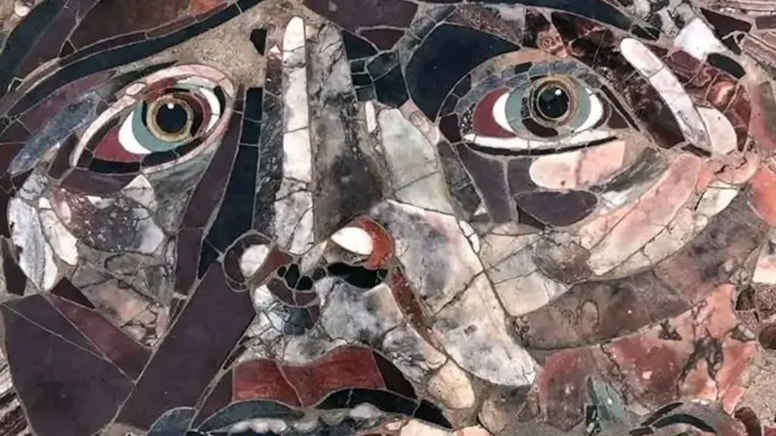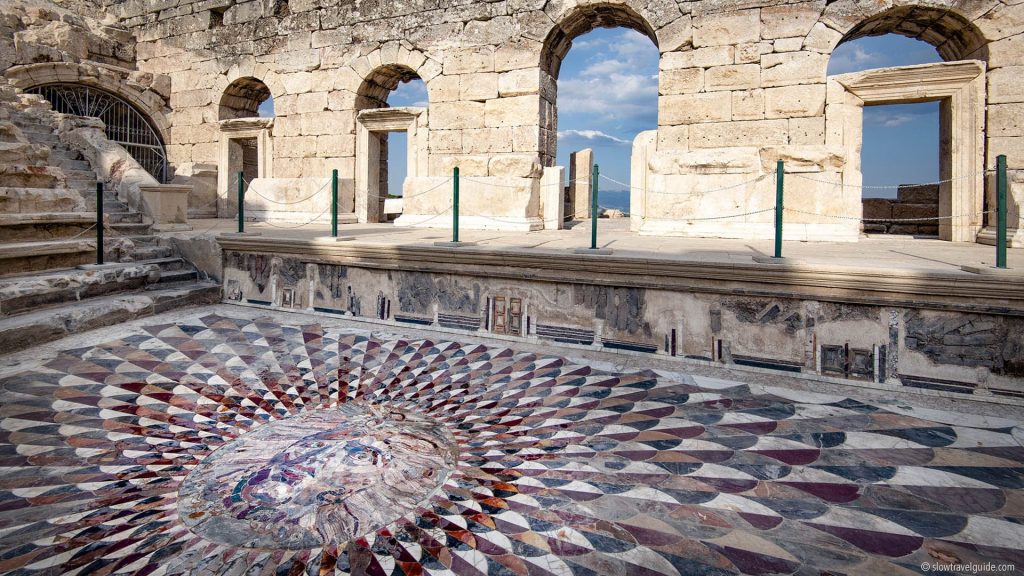
The Medusa mosaic has been protect by a special technique
The stunning Medusa mosaic of the ancient city of Kibyra, located in the Gölhisar district of Burdur and listed on the UNESCO World Heritage Tentative List, has been covered with a special method to protect it from climate conditions.
The Medusa depicted in the mosaic is a terrifying Gorgon with a head full of snakes, capable of turning people to stone with her gaze. Despite her stunning beauty, she has been cursed by the goddess Athena.
The mosaic in Kibyra is created using the “opus sectile” technique, which involves assembling pieces of differently colored marble, making it a unique work of art in the world.

The Medusa Mosaic, located in the ancient city of Kibyra, has an approximate history of 2000 years and is situated in the orchestra section of the ancient theater.
The ancient city of Kibyra, listed on the UNESCO World Heritage Tentative List, has become a popular destination for visitors. Approximately 25,000 people visited the ancient city this year.

The Medusa mosaic has attracted significant interest from visitors. Discovered during excavations in 2009 in the Odeion section, the Medusa mosaic has been protected this year to prevent damage from winter conditions.
The head of the Kibyra excavation, Prof. Dr. Şükrü Özüdoğru, a faculty member of the Department of Archaeology at Burdur Mehmet Akif University, shared on his social media account, “The opus sectile Medusa mosaic covering the orchestra floor of the Kibyra Olympeion Odeion and the floor of the Odeion Stoa, made of opus tessellatum mosaic, have been covered to protect them from climate conditions. It will be reopened to visitors in April 2025.”
You may also like
- A 1700-year-old statue of Pan unearthed during the excavations at Polyeuktos in İstanbul
- The granary was found in the ancient city of Sebaste, founded by the first Roman emperor Augustus
- Donalar Kale Kapı Rock Tomb or Donalar Rock Tomb
- Theater emerges as works continue in ancient city of Perinthos
- Urartian King Argishti’s bronze shield revealed the name of an unknown country
- The religious center of Lycia, the ancient city of Letoon
- Who were the Luwians?
- A new study brings a fresh perspective on the Anatolian origin of the Indo-European languages
- Perhaps the oldest thermal treatment center in the world, which has been in continuous use for 2000 years -Basilica Therma Roman Bath or King’s Daughter-
- The largest synagogue of the ancient world, located in the ancient city of Sardis, is being restored











Leave a Reply